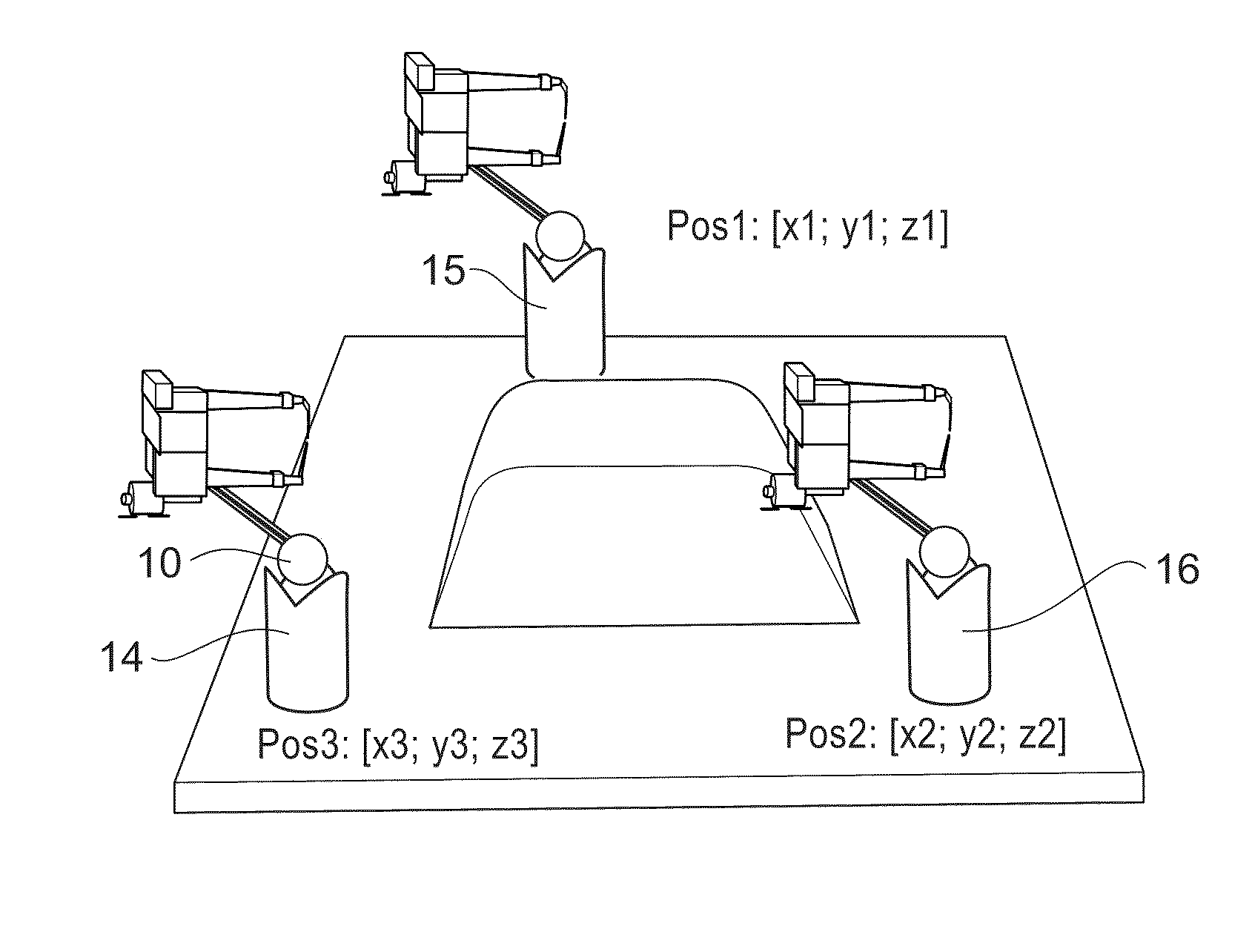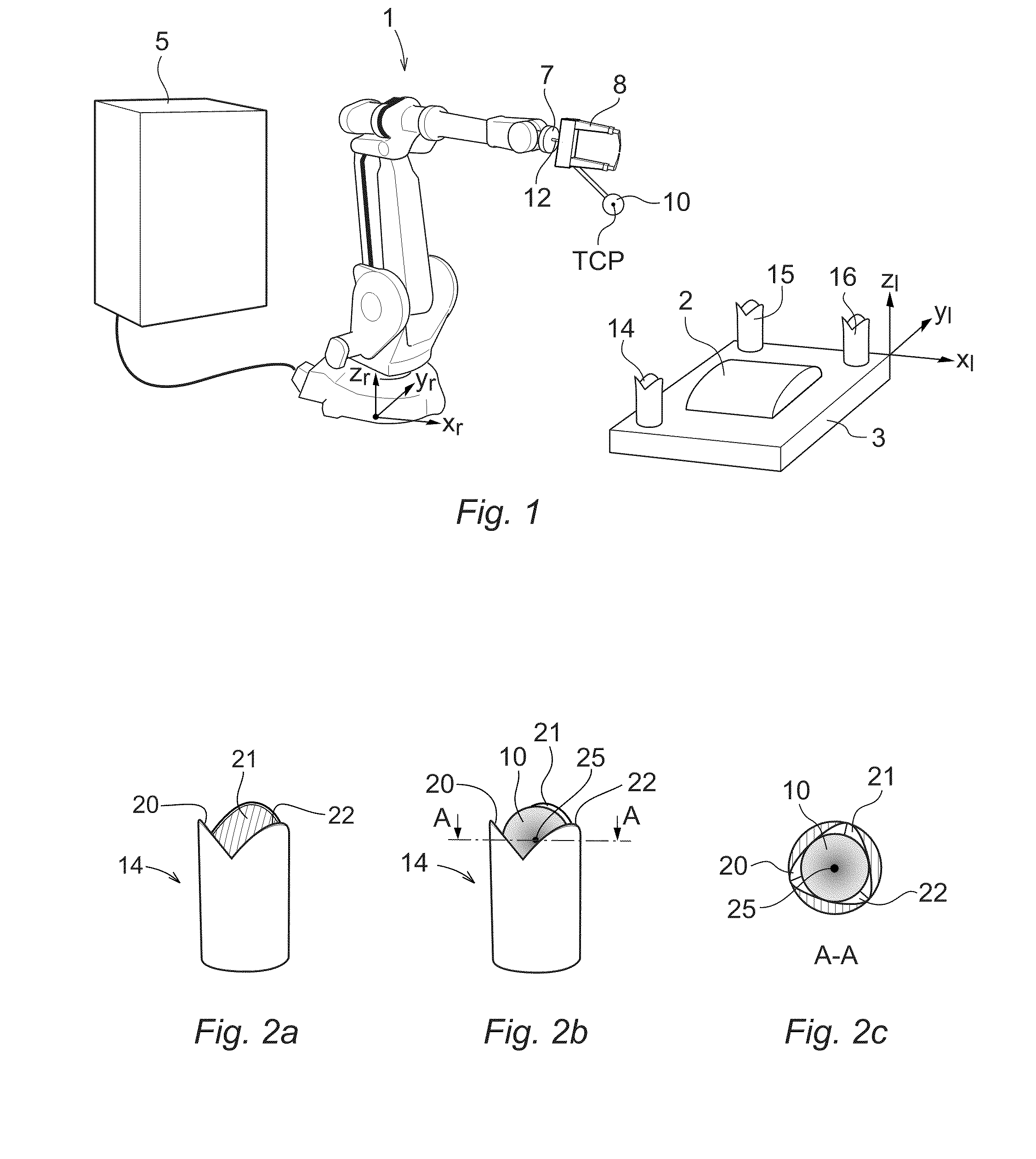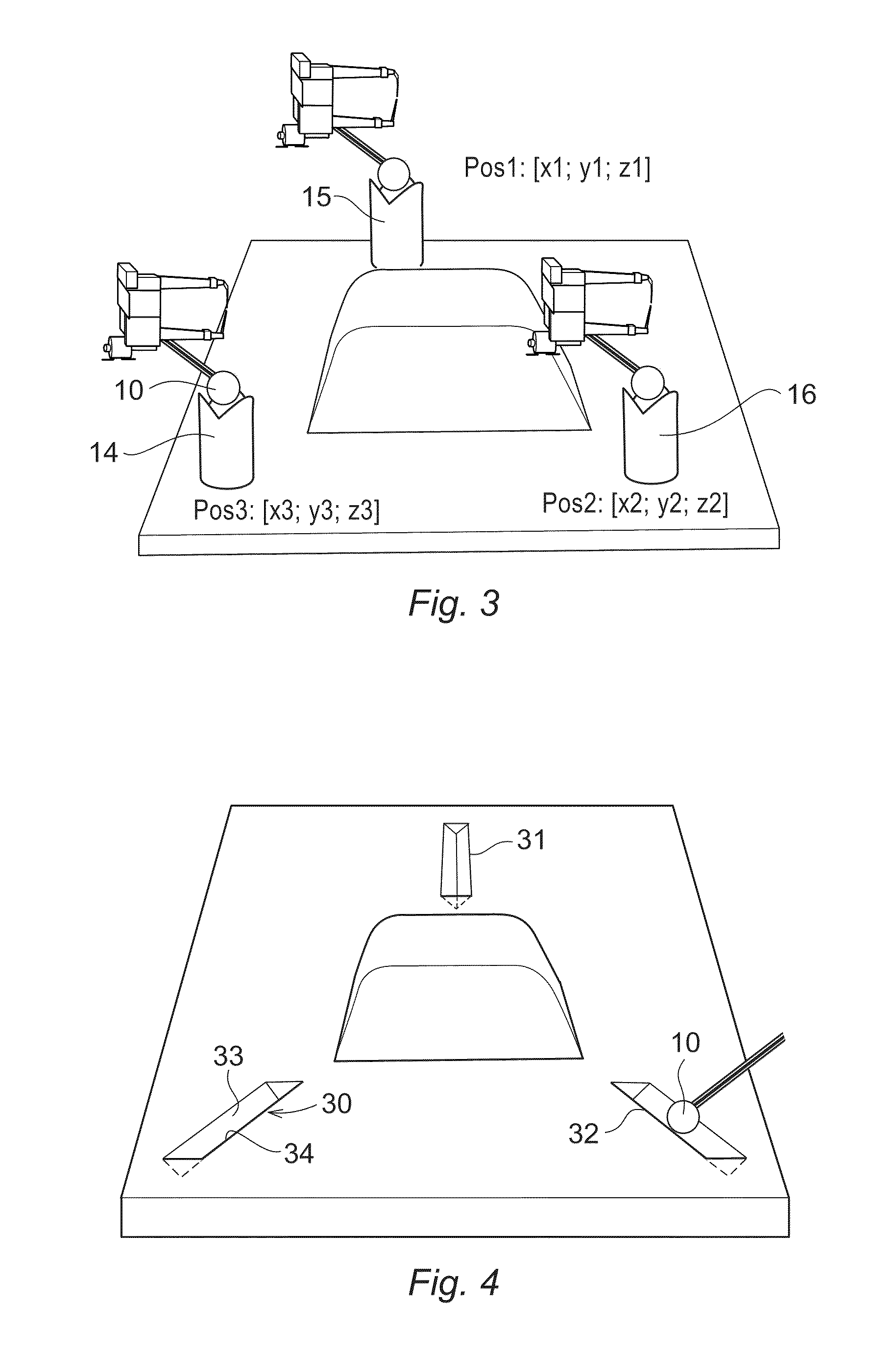Method and system for determining the relation between a robot coordinate system and a local coordinate system located in the working range of the robot
a robot and local coordinate technology, applied in the field of method and system for determining the relation between a robot coordinate system and a local coordinate system located in the working range of the robot, can solve the problem of less easy to understand for the programmer, and achieve the effect of simple, quick and accura
- Summary
- Abstract
- Description
- Claims
- Application Information
AI Technical Summary
Benefits of technology
Problems solved by technology
Method used
Image
Examples
Embodiment Construction
[0034]FIG. 1 shows a system for determining the relation between a local coordinate system xl, yl, zl, and a robot coordinate system xr, yr, zr according to an embodiment of the invention. In this example, the robot coordinate system is located in the base of the robot and is denoted the base coordinate system of the robot. In this example, the local coordinate system is a work piece coordinate system and is related to a work piece 2 to be processed by the robot and which is fixedly hold by a fixture 3.
[0035]The robot 1 is provided with a robot controller 5 including at least one processor, memory and communication means. In this example, the robot controller 5 is utilized for carrying out most of the steps in the method according to the invention. The robot 1 comprises a tool flange 7 for attaching a tool 8. A first calibration object 10 in the form of a male calibration object including a sphere 10 is fixedly attached to the tool 8, and accordingly fixedly attached to the robot, d...
PUM
 Login to View More
Login to View More Abstract
Description
Claims
Application Information
 Login to View More
Login to View More - R&D
- Intellectual Property
- Life Sciences
- Materials
- Tech Scout
- Unparalleled Data Quality
- Higher Quality Content
- 60% Fewer Hallucinations
Browse by: Latest US Patents, China's latest patents, Technical Efficacy Thesaurus, Application Domain, Technology Topic, Popular Technical Reports.
© 2025 PatSnap. All rights reserved.Legal|Privacy policy|Modern Slavery Act Transparency Statement|Sitemap|About US| Contact US: help@patsnap.com



